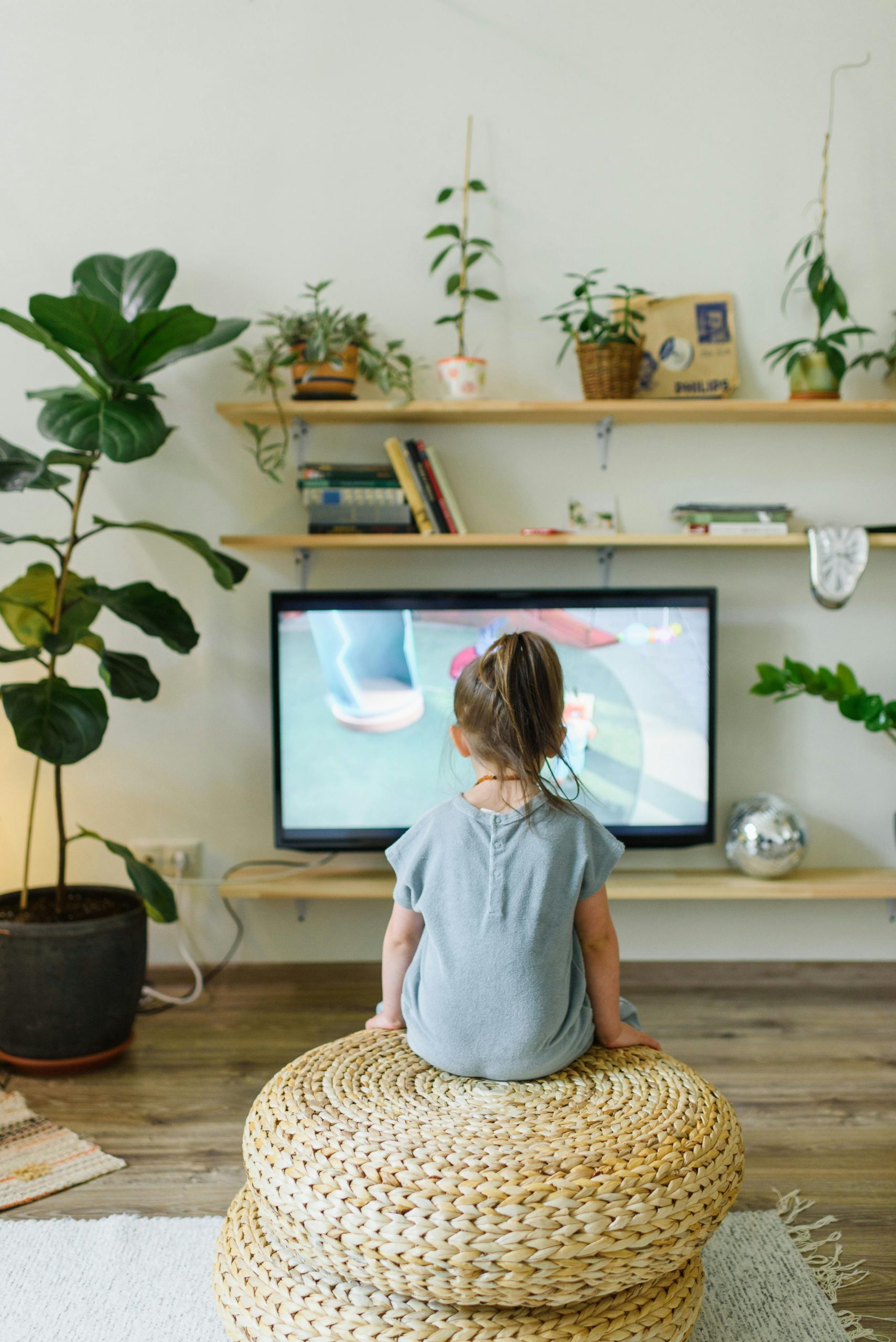A Brief Overview of Screen Time and Its Effects on Kids

Screen time refers to the amount of time that is spent in front of digital displays, such as computers, tablets, smartphones, and TVs. For many kids, it’s an integral part of their everyday life, both at school and at leisure time. Children’s screen usage has a variety of negative consequences on their mental and physical health as well as their social and emotional development. Overuse can have negative effects on mental and physical health due to overstimulation and disturbed sleep patterns, as well as sedentary behaviors that harm physical health. Social skills may be weakened when screen usage frequently takes the place of important in-person interactions. However, screen time can be advantageous when utilized wisely, providing chances for creative expression and instructional information. It’s critical to strike a balance between screen time advantages and possible risks for kids.
Understanding the Age-Based Screen Time Guidelines

AAP and WHO guidelines
To assist parents in navigating the confusing world of screen time, the World Health Organization (WHO) and the American Academy of Pediatrics (AAP) have established guidelines. These guidelines are intended to support children’s healthy growth from birth to adolescence. AAP recommends against allowing children under 18 months old to spend time on screens, with the exception of video conferencing. They advise parents to watch high-quality programs with their 18 to 24-month-old children in order to help them understand the material. The World Health Organization closely agrees, placing greater emphasis on physical activity and sleep than screen usage for good health.
Paint Time Across the Eras
- Toddlers (ages 2 to 5): The AAP states that only one hour of excellent programming should be shown each day.
- Children and teenagers in school: Be more adaptable, but make sure screen time doesn’t conflict with getting enough sleep, exercising, or engaging in other healthy behaviors.
The Value of Equilibrium
It’s critical to strike a balance between screen time and other pursuits. It goes beyond simply setting hours; it also involves giving them a variety of experiences to enrich their life. Promote face-to-face contact, outdoor play, and other non-screen activities. A healthy lifestyle, the development of social skills, and the enhancement of both physical and mental well-being all depend on this balance. Parents may help their children lead more balanced and satisfying digital lives by modeling appropriate behavior and designating areas and times that are tech-free.
By following and comprehending these recommendations, parents may ensure that their kids grow up healthy, happy, and well-adjusted in an increasingly digital environment by making educated decisions regarding their screen usage.
The Parent’s Role in Controlling Screen Time

In order to provide a healthy digital existence for their children, parents are essential in controlling their screen time. Setting a good example and highlighting the importance of moderation, parents can model healthy screen habits. It’s important to consider both the amount and quality of digital engagement when it comes to screen time. Parents can set boundaries that promote a range of activities while guiding their children toward enriching content by actively participating in their children’s digital world.
Providing a Good Example
Youngsters are excellent observers and frequently emulate their parents’ actions. Parents who intelligently use screens convey a strong message about the need of moderation. This could entail putting electronics away during family meals or giving in-person relationships a higher priority than virtual ones. Such deeds emphasize the importance of interpersonal relationships and the advantages of living a life free from screens.
Making a Media Plan for the Family
One of the proactive steps in properly managing screen time is creating a family media plan. This approach may include times set aside for digital detoxification, tech-free zones inside the house, and mutually agreed-upon screen time limits. Crucially, it ought to promote family-friendly pastimes like creative arts, board games, and outdoor adventures that promote connections without the use of screens. The Pediatrics Society of America provides tools to assist families in designing a strategy that works for their particular requirements.
The Value of Participation
Being involved in your child’s digital world is about understanding and guiding them instead than spying on them. It’s a chance to talk about internet safety, discover new hobbies together, and establish reasonable guidelines for digital use. Children who feel supported and understood by their parents are more inclined to talk to them about their experiences and worries when they are on the internet.
To sum up, controlling screen time is a team effort that gains from open communication, group activities, and parents’ continuous modeling. Parents may assist their children negotiate the intricacies of the digital world with confidence and responsibly by encouraging a balanced approach to digital participation.
Promoting Efficient Screen Time

Finding Developmentally and Educationally Fit Content
- Select Correctly: To make sure they correspond to your child’s developmental stage, look for applications and programs created in collaboration with educational specialists.
- Important Domains: Language acquisition, artistic expression, and problem-solving exercises should all be included in the curriculum.
- Advantages: Lays a strong basis for inquiry and cognitive development.
The Advantages of Sharing and Talking About Content Together
- Together Watch: It’s not just time invested; it’s an educational opportunity.
- Take Part in a Conversation: To improve comprehension and promote critical thinking, have a discussion about the material.
- Improve Your Skills: This exchange improves language proficiency and cultivates a critical attitude toward media consumption.
Promoting Innovative and Engaging Screen Time Exercises
- Go Observational: Promote interactive activities such as coding apps, instructional games, and digital art projects.
- Promote Your Skills: These exercises foster creativity, digital literacy, and problem-solving abilities.
- Engaging in Active Learning: Transform screen time into a dynamic, interesting educational opportunity.
Making wise decisions that promote your child’s growth is key to quality screen time. You can turn screen time into an effective teaching tool by choosing relevant information, having conversations, and promoting interactive activities. Through shared digital experiences, this method not only enhances learning but also fortifies the relationship between parents and children.
Handling Obstacles and Opposition

Typical Obstacles to Screen Time Reduction
- Boredom and tantrums: When attempting to reduce their children’s screen usage, parents frequently run into these obstacles.
- Gaining an Understanding of Difficulties: The first step to conquering these reactions is acknowledging that they are normal.
Tips for Overcoming Opposition
- Create Clearly Defined Rules: Describe the goals and advantages of limiting screen time.
- The Secret Is Consistency: Knowing the boundaries and having structure help children flourish.
- Provide Options: Give kids autonomy by allowing them to select from a variety of activities besides screen time.
The Value of Gradual Change and Patience
- Have patience: Sudden changes may cause annoyance. Children can adjust when screen time is gradually reduced.
- Honor minor victories: Stress the advantages of reducing the amount of time spent in front of screens.
- Objective: Maintain a healthy digital lifestyle by providing your kids with a range of engaging activities.
Parents may manage the difficulties of limiting screen time by being aware of the obstacles, using practical techniques, and practicing tolerance. A healthier, more balanced lifestyle for your kids is the result of this journey, which takes work and understanding but is well worth it.
In Conclusion
Screen time balance is a process rather than a final goal. It makes family life more joyful and resilient. Parents can ensure their children’s development into well-rounded persons by navigating the digital realm with awareness and application of specific tactics. This harmony between virtual interaction and in-person encounters improves people’s lives by fostering social, mental, and physical well-being. Let’s take on this task and help our kids grow up with peaceful digital lives.
Balancing Screen Time: Guidelines for Parents FAQs
Families can balance screen time during vacations by planning a mix of screen-based and screen-free activities, setting specific times for screen use, and encouraging family activities that do not involve screens. It’s a good opportunity to explore new places and activities together that can be enjoyable and engaging without the need for digital devices. Establishing these boundaries beforehand can help ensure that everyone enjoys the vacation while still maintaining a healthy balance with screen use.
Parents can encourage less screen time by being good role models in their own screen use, engaging children in non-screen activities that are fun and fulfilling, and setting clear limits on screen use. Providing alternatives such as outdoor play, board games, and books can help children find other ways to entertain themselves and develop hobbies. Consistency and positive reinforcement for non-screen activities can also support a healthy balance.
Parents can monitor their children’s screen time by using parental control apps, setting up screen time limits on devices, and keeping screens in common areas to supervise use. It’s also beneficial to have open discussions about digital media use, setting clear rules and expectations about screen time. Engaging in shared screen activities can also provide opportunities for parents to directly oversee what their children are viewing and doing online.
Screen time can be educational when it involves high-quality content that is interactive, age-appropriate, and encourages learning and creativity. Educational apps, games, and television shows designed for children can introduce new ideas, reinforce knowledge, and develop skills in areas such as math, science, and language. Parents should actively select and participate in these digital experiences with their children to maximize the educational benefits.
The American Academy of Pediatrics suggests that children aged 2 to 5 years should have no more than one hour of screen time per day, and for those 6 years and older, parents should ensure consistent limits on screen time, ensuring it does not interfere with sleep and physical activities. It’s important for screen time to be balanced with other critical aspects of development such as physical play, reading, and social interactions with family and friends. Setting these limits helps in developing a healthy media diet from a young age.
Children can start using screens from 18 months of age, but it should be limited and involve high-quality programming or apps that parents and children use together. Before this age, it’s recommended that infants and toddlers have screen time that is very minimal, focusing instead on interactive, unstructured playtime. This early introduction should prioritize content that encourages bonding and learning, with parents actively participating to guide their child’s engagement.
Healthy screen time habits include creating a family media plan that outlines when, where, and how screens can be used, ensuring that screen time does not interfere with sleep, physical activity, or other behaviors essential to health. It’s also helpful to designate screen-free times, such as during meals and before bedtime, to encourage face-to-face interaction and ensure that screens do not disrupt sleep patterns. Encouraging educational and physically active screen use can also contribute to a more positive screen time experience.
Excessive screen time can lead to sleep problems, reduced physical activity, and can negatively impact social skills and academic performance. It’s associated with a higher risk of experiencing emotional and behavioral problems including attention issues, anxiety, and depression. Moderation and mindful selection of content can mitigate these risks, making it crucial for parents to monitor and limit their children’s screen use.
Signs of screen addiction in children include a preoccupation with screens, withdrawal symptoms when screens are not available, loss of interest in other activities, and conflicts with family over screen use. These behaviors can impact a child’s social interactions, academic performance, and overall well-being. Recognizing these signs early and seeking professional advice can help address and manage screen addiction effectively.
Parents play a crucial role in managing screen time by setting and enforcing rules, guiding the selection of content, and modeling healthy screen habits themselves. It’s important for parents to be actively involved in their children’s digital life, including discussing the content they consume and the time they spend on screens. This involvement helps in establishing a healthy relationship with technology in the family.

Jasmine Duque-Love is a mother of one and a practicing physiotherapist with a Phd in Physiotherapy

